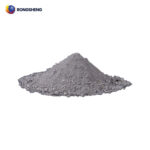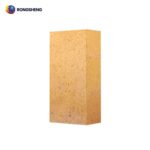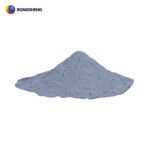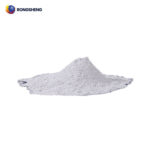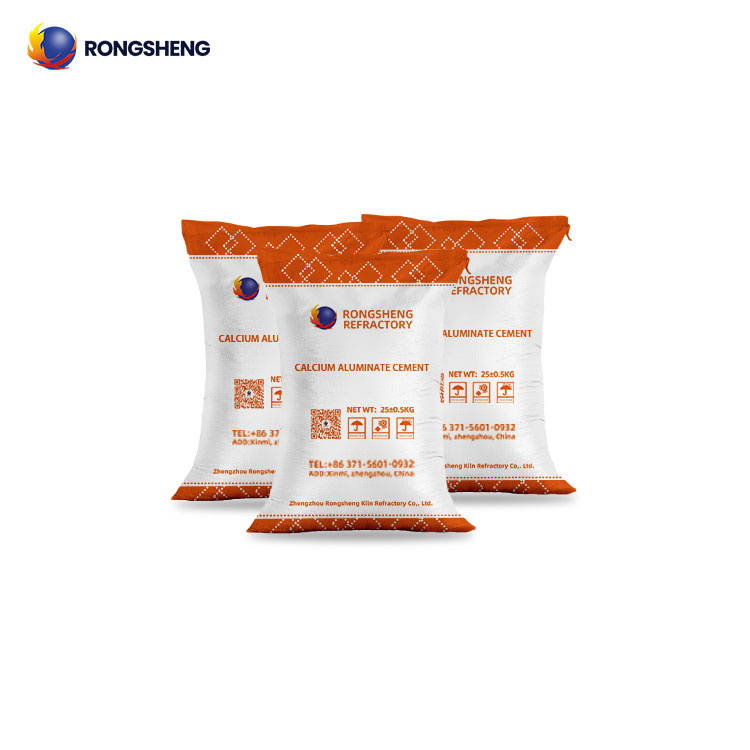
Calcium Aluminate Cement
- As a binder for refractory materials,
- Ordinary calcium aluminate cement,
- Also known as alumina cement, high alumina cement,
- Pure calcium aluminate cement,
- Including CA-70, CA-75 and CA-80 cement.
We are Here to Help!
Email: sales@hy-refractory.com
WhatsApp: +86 185 3831 2977
As a binder for refractory materials, aluminate binders include ordinary calcium aluminate cement (also known as alumina cement, high alumina cement), pure calcium aluminate cement (including CA-70, CA-75, and CA-80 cement), barium aluminate cement, and calcium aluminate cement containing spinel.
Introduction to Calcium Aluminate Cement
The cementitious material with calcium aluminate (CaO·Al2O3) and calcium aluminate (CaO·2Al2O3) as the main phase components is called calcium aluminate cement. Calcium aluminate cement is made by mixing natural bauxite or industrial alumina with calcium carbonate (limestone) in a certain proportion and calcining or electrofusion. In Europe, high-iron calcium aluminate cement is also made by mixing iron bauxite with limestone and melting it. Calcium aluminate cement has high refractoriness and stability. Therefore, calcium aluminate cement is widely used as a binder for amorphous refractory materials.
Chemical Composition and Phase Composition of Calcium Aluminate Cement
Calcium aluminate cement is divided into ordinary calcium aluminate cement and pure calcium aluminate cement.
- The chemical composition of ordinary calcium aluminate cement fluctuates greatly. w(Al2O3) is 53%~70%, w(CaO) is 21%~35%, and w(SiO2) is 3%~7%. In addition, it also contains a small amount of impurities such as TiO2, Fe2O3 and MgO. The phase content of ordinary calcium aluminate cement produced by the sintering method is CA 40%~50%, CA2 20%~35%, and C2AS 20%~30%.
- Pure calcium aluminate cement has very few impurities. Therefore, its main phases are CA and CA2. It’s just that the proportion of CA and CA2 varies with the content of Al2O3.
How to Perform Curing when Using Calcium Aluminate Cement as a Binder?
When using calcium aluminate cement as a binder, it is generally baked after 3 to 7 days (or 1 to 2 days) of curing to stop hydration. After the initial curing, the strength of the refractory lining is the strength after heat treatment. Therefore, the problem of the regression of the lining strength in the later period is not considered.
The setting and hardening speed of calcium aluminate cement are related to the curing temperature. The CA2 phase is faster with the increase of curing temperature. The CA phase is different, which is faster at around 20°C and slower at 30°C. It becomes faster again when it rises to 30°C.
- There is heat release when calcium aluminate cement is hydrated, and different phases have different heat releases within a week. Therefore, when using calcium aluminate cement containing a fast-setting phase as a binder, appropriate cooling measures should be taken. Especially in summer, to prevent excessive heat concentration from affecting the internal and surface quality of the calcium aluminate cement-bonded castable.
- But the cement with CA2 as the main phase is the opposite, because the setting speed slows down. Especially in winter, steam curing can be used to promote hydration, accelerate the setting and hardening speed. Now, accelerators or retarders can generally be used to adjust the setting and hardening speed of calcium aluminate cement, avoiding the situation where the setting and hardening speed is controlled by temperature alone.
Calcium aluminate hydrate undergoes dehydration and phase change during heating. Its hydration bond is destroyed, and at the same time, it is transformed from low-density hydrate to high-density hydrate, the molar volume is reduced, and the voids are enlarged. Therefore, the strength of the castable bonded with calcium aluminate cement after medium-temperature heat treatment decreases significantly. Only when heated to a high temperature, the material is sintered and ceramic bonding is produced, and the strength is increased again.
Technical Performance Requirements of Calcium Aluminate Cement
There are two main technical performance requirements for ordinary calcium aluminate cement:
- ① Appropriate setting time to ensure sufficient working time. Generally, the initial setting is required to be greater than 1h and the final setting is less than 8h. The shorter the time interval between the initial setting and final setting, the better;
- ② Sufficient early strength. That is, one day of curing can reach 60% to 70% of the strength specified by the cement grade, and three days of curing can reach more than 90%.
In addition to the above two points, pure calcium aluminate cement is also required to have a certain refractoriness and good working performance to meet construction requirements and high-temperature use requirements.
Physical and Chemical Properties of Calcium Aluminate Cement
| Items | Ordinary Calcium Aluminate Cement | Pure Calcium Aluminate Cement | |||
| CA50(625) | CA50(725) | CA70 | CA80 | ||
| Chemical Composition w/% | Al2O3 | 52.98 | 53.86 | 74.9 | 80.10 |
| CaO | 34.50 | 34.54 | – | – | |
| SiO2 | 6.69 | 5.95 | 0.19 | 0.10 | |
| Fe2O3 | 1.87 | 1.81 | 0.32 | 0.20 | |
| MgO | 0.51 | 0.51 | – | – | |
| TiO2 | 2.66 | 2.64 | – | – | |
| Specific Surface Area m2/g | 302 | 335 | 4600 | 8900 | |
| 0.088mm Screen Residue % | 5.8 | 4.5 | – | – | |
| Coagulation Time h:min | Initial Setting | 2:31 | 2:11 | 2:18 | 0:35 |
| Final Setting | 3:02 | 2:54 | 4:18 | 1:19 | |
| Compressive Strength MPa | 1d | 66.4 | 70.6 | 54.0 | 48.1 |
| 3d | 76.4 | 80.2 | – | – | |
| Flexural Strength MPa | 1d | 7.4 | 7.8 | – | – |
| 3d | 8.1 | 8.7 | – | – | |
Application of Calcium Aluminate Cement
Calcium aluminate cement is mainly used as a binder for refractory castables and injection materials. Medium and low-grade refractory castables, such as clay and high-alumina castables, use ordinary calcium aluminate cement as a binder. High-grade refractory castables, such as corundum, mullite, chromium-containing corundum, and corundum-spinel castables, use pure calcium aluminate cement as a binder. The amount of calcium aluminate cement added to ordinary refractory castables is 10%~20%. The amount added to low-cement refractory castables is 5%~7%. The amount added to ultra-low cement castables is less than 3%.
Precautions for Using Calcium Aluminate Cement as a Binder for Refractory Castables
Precautions for using calcium aluminate cement as a binder for refractory castables. After the refractory castable is formed, the surface of the castable should be covered with a plastic film. This prevents moisture from evaporating too quickly, leaving unhydrated cement, resulting in a powdery layer or peeling on the surface. It can also prevent Na+ ions (from the dispersant) and Ca+ ions (from the cement) dissolved in water inside the castable from migrating to the surface of the castable with water, and reacting with CO2 gas in the atmosphere to form carbonates, causing “white frost” or peeling on the surface of the castable, thereby destroying the overall structure of the surface.
Rongsheng Refractory Material Manufacturer
Rongsheng Refractory Material Manufacturer is a powerful manufacturer and seller of refractory materials. Rongsheng’s refractory products have been sold to more than 120 countries around the world, such as South Africa, Chile, Egypt, Colombia, Uzbekistan, Italy, Indonesia, Ukraine, Hungary, Spain, Kenya, Syria, Zambia, Oman, Venezuela, India, Peru, the United States, Ethiopia, etc. Rongsheng can customize refractory lining materials according to the actual working conditions of high-temperature industrial furnaces. This includes various refractory bricks, refractory mortars, refractory castables, refractory ramming materials, etc. Contact Rongsheng for free samples and quotes.

